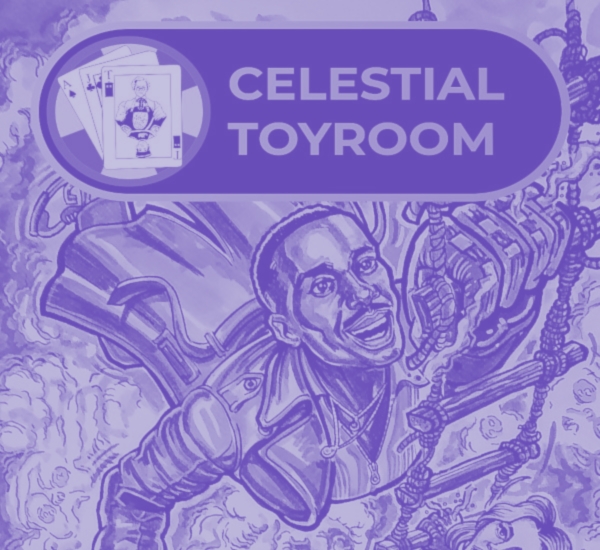Labeled from the time of it’s broadcast as an “oddball” story, The Greatest Show in the Galaxy has proved to be far more than a freakish but of fun. Despite its low budget and make-do locations, it is a tour-de-force of spectacle peppered with social commentary; a three-ring circus of datk twists and epic mythology mixing gods, clowns, killer robots, hippies, a werewolf, an explorer and a space biker, amongst other glorious geeks. It’s full of diversions and feels like it shouldn’t work, but it does, thanks to the vivid imagination of scriptwriter Stephen Wyatt and remarkable performances by Sylvester McCoy, Sophie Aldred and Ian Reddington as the dreadfully creepy Chief Clown. Even 36 years later, it continues to inspire comics, audio spin-offs and now an in-depth analysis by Dale Smith, published as part of Obverse Books’ Black Archives series.
This little show deserves its newfound love. Back in 1988, it was like a breath of fresh air to help waft away the odorous memory of some mid-’80s stinkers. Smith’s challenge is to look at this classic adventure with fresh eyes, finding new comments to make about this much-studied tale. To do this, he uses the context that has come to light over the intervening years thanks to, in particular, Andrew Cartmel’s autobiographical Script Doctor: The Inside Story of Doctor Who 1986-1989 and Richard Marson’s JNT biography Totally Tasteless: The Life and Times of John Nathan-Turner. As Smith would no doubt admit, he also goes off on a Big Top’s worth of tangents - everything from magic and Afrika Bambaataa to tarot cards and Norse mythology. Most are fascinating, all are relevant and the book is all the better for its diversions.
Smith isn’t clowning around though with this well-written, thoughtfully researched book.
Smith does not shy away from some of the story’s more bothersome elements, such as the indelicately caricatured Whizz Kid - a case of JNT biting the fans that fed him - and the clunky raps performed by Ringmaster Ricco Ross, which Smith dissects with the help of pioneering UK hip hop artist MC Blade. The Lyrical Maniac confirms that Ross is “stereotyped … into a role” in a clumsy attempt by Who to be cool. Smith cleverly compares the then-hip-hop scene to Doctor Who’s fandom and the programme’s cancellation, with exclusive sub-cultures fading away, while inclusive groups paved the way for a future revival.
Whizz-Kid is an obvious clue that Greatest Show is a commentary on Doctor Who - it’s not as good as it used to be, he says - and Smith finds several apposite parallels. For example, the Psychic Circus is struggling and is casually used and dismissed by the Gods of Ragnarok (symbolising the BBC and/or viewers). According to this book, most of the mirroring seems to be subconscious or at least unacknowledged by the production team, yet Smith draws some fascinating comparisons nonetheless.
As well as the focus on Greatest Show itself, the book also takes a wider look at Cartmel’s seasons, incorporating the influence of Alan Moore and ’80s comics, the intended relevance of Ace and a brief history of Commedia dell’Arte. Smith isn’t clowning around though with this well-written, thoughtfully researched book.
